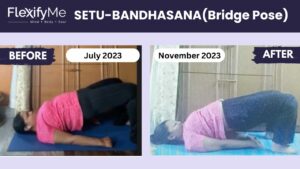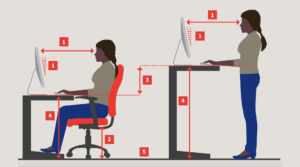Back pain affects millions of people worldwide, making it one of the most common reasons for missing work or reducing activity. In the quest for relief, many are exploring yoga as a potential way to ease aches and improve mobility. However, misconceptions still abound regarding yoga’s safety and effectiveness for back problems.
In this guide, we’ll dig into yoga for back care based on scientific evidence and expert insights. Can certain poses exacerbate back injuries? Should people with herniated discs avoid twists? Does yoga truly help chronic lower back pain? We’ll address common myths, identify beneficial practices based on research, and provide actionable tips for safe, therapeutic yoga sessions.
With back pain, it’s always wise to consult your healthcare provider first. Yoga can complement other treatment plans beautifully, but shouldn’t replace medical advice. Used under proper guidance, a gentle yoga routine can stretch tight muscles, strengthen the back and core, and improve alignment. Relaxation techniques also empower students to manage stress and discomfort through the mind-body connection.
Approaching yoga with realistic expectations, modifying poses as needed, and listening closely to your body is key. Our aim is to help you discover yoga’s potential benefits while avoiding further strain or injury. With an open mind and compassionate practice focused on gradual progress, yoga can become an invaluable ally on your journey towards spinal health. Let’s get started!
Myth #1: Yoga is only for flexible people
When Sonia first tried yoga, she felt intimidated. As someone who struggled to touch her toes, the elaborate twisting and bending seemed impossible for her stiff, ache-filled back. Discouraged, Sonia assumed yoga wasn’t for inflexible people. But after her doctor recommended trying gentle yoga, she decided to give it another shot.
With some simple modifications from her instructor, Sonia discovered she could do yoga after all. Using blocks and straps for support, adjusting poses to reduce strain, and moving slowly helped her build strength and stability. After a few weeks, Sonia began noticing improved mobility and less back tightness. Her flexibility gradually increased by gently coaxing her body into comfortable stretches.
Sonia realized the myth that yoga requires innate flexibility simply wasn’t true. Yoga meets students wherever they are, adapting to all levels. Advanced practitioners might progress to deeper expressions of poses. But beginners focus on alignment, strength, and stability – not gymnastic feats. Props aid modifications for limited mobility or pain. And restorative postures relax the body using supports.
As Yoga International explains, yoga is ultimately about working inward. While physical flexibility allows fuller expression of poses, the real “stretch” happens in the mind. Letting go of judgment, expectations, and attachment to outcomes makes yoga therapeutic at any level.
Rather than demanding a pretzel-like physique, yoga helps students become more embodied and comfortable in their own skin. By tuning into subtle sensations with mindfulness, flexibility naturally increases over time. But the gifts of mental clarity, stress resilience, and inner peace are accessible to all.
With personalized guidance and compassion for your unique body, yoga can work for anyone. What matters isn’t touching your toes, but the journey of self-discovery along the way.
Myth #2: Yoga can worsen back pain
We’ve all heard it: “Yoga cures back pain!” But the truth is, back pain is a complex issue, and one-size-fits-all solutions rarely work. Let’s bust the myth that specific poses are guaranteed to cure your aches and explore why personalized approaches are key.
Think of your back like a symphony orchestra. Each muscle, bone, and disc plays a role in the harmony of movement. But if one instrument is out of tune, the entire orchestra suffers. Similarly, back pain often stems from specific underlying causes, not just a generic “weak back.” It could be a slipped disc, a pinched nerve, or even stress and bad posture.
So, what’s the good news? Yoga can be a powerful tool for managing back pain, but it’s not magic. Just like you wouldn’t treat a broken bone with the same medicine as a cold, different back pain needs different yoga practices.
Here’s why personalized yoga is crucial:
- Understanding the root cause: A qualified yoga therapist or instructor can assess your pain and recommend poses that target the specific muscles and areas needing attention. Think of it like finding the right note to bring the orchestra back into harmony.
- Listening to your body: Every body is unique, and what works for one person might not work for another. A personalized approach allows you to modify poses based on your flexibility, strength, and pain level.
- Holistic approach: Yoga is more than just physical postures. Breathing exercises, relaxation techniques, and mindfulness practices can all contribute to pain management and overall well-being.
Remember, yoga is a journey, not a destination. It takes time, patience, and a willingness to experiment to find what works best for you. Consider these tips:
- Start slow and gentle: Don’t push yourself too hard, especially if you’re new to yoga or experiencing pain.
- Communicate with your instructor: Let them know about your pain and any limitations you have.
- Listen to your body: If a pose feels painful, stop and modify it or skip it altogether.
- Focus on quality over quantity: It’s better to do a few poses correctly than many poses poorly.
- Be patient and consistent: Regular practice is key to experiencing the benefits of yoga for back pain management.
In India, many yoga studios and therapists offer personalized yoga sessions for back pain. You can also find online resources and apps that provide tailored yoga sequences based on your specific needs.
Remember, the most important thing is to be informed and empowered to make choices about your own health and well-being. Don’t be afraid to ask questions, seek professional guidance, and find a yoga practice that truly works for you.
P.S. While specific poses might not be a guaranteed cure, yoga can be a valuable tool in your back pain management journey. By taking a personalized and informed approach, you can experience the many benefits yoga has to offer!
Myth #3: Specific poses are guaranteed to cure back pain
We’ve all seen those amazing yoga poses online, and it might seem tempting to just jump in and try them yourself, especially if you’re dealing with back pain. But hold on, yogi wannabe! While knowing the poses is a great start, having a qualified yoga teacher can make a world of difference in your practice, especially when managing back pain.
Think of it like this: yoga poses are like recipes. You can read the ingredients and instructions, but without a skilled chef guiding you, you might end up with a burnt mess instead of a delicious meal. Similarly, improper alignment and technique in yoga can actually worsen back pain instead of easing it.
Here’s why a yoga teacher is your secret ingredient for a safe and effective practice:
- Alignment is key: A good teacher will have a keen eye for your form, ensuring you’re performing poses safely and effectively. Imagine them as your posture police, keeping you aligned and preventing injuries.
- Modifications matter: Everyone’s body is unique, and what works for one person might not work for another. A teacher can suggest modifications based on your individual needs and limitations, preventing pain and maximizing benefits.
- Beyond the poses: Yoga is more than just physical postures. Pranayama (breathing exercises) and meditation can significantly impact stress and pain management. A teacher can guide you through these practices for holistic well-being.
In India, many yoga studios offer specialized classes for beginners or those with back pain, often led by Yoga Alliance-certified teachers. These teachers have undergone rigorous training to ensure they can provide safe and effective guidance.
Remember, even if you know the poses, a qualified yoga teacher can:
- Reduce your risk of injury
- Help you achieve deeper stretches and poses
- Personalize your practice for optimal results
- Offer support and motivation on your yoga journey
So, while you might be tempted to go solo, consider investing in a few classes with a qualified teacher. It could be the best decision you make for your back (and your overall well-being)!
Your Yoga Journey Starts Now: Unroll Your Mat with Confidence
Remember those myths we tackled? The ones about quick fixes and one-size-fits-all solutions? Let’s leave them behind and embrace the true magic of yoga: a personalized journey towards well-being, no matter your background or experience.
By now, you know that back pain is complex, and so should your approach to managing it. Ditch the quick fixes and embrace the power of safe, effective yoga practice guided by a qualified teacher. They’ll be your posture guardian, ensuring you move with awareness and avoid injury. Remember, a little guidance can go a long way in preventing pain and maximizing benefits.
Think of your yoga practice like a delicious curry – the right blend of spices (poses) and guidance (teacher) creates a truly transformative experience. Just like you wouldn’t throw random ingredients into a pot, don’t risk your well-being with unguided yoga, especially if you’re dealing with back pain.
So, what’s next?
- Seek a qualified yoga teacher: Look for someone certified by Yoga Alliance or with experience in therapeutic yoga. In India, many studios offer specialized classes for beginners or those with back pain.
- Communicate your needs: Be upfront about your back pain and any limitations you have. A good teacher will tailor your practice accordingly.
- Start slow and listen to your body: Don’t push yourself too hard, especially at first. Focus on proper alignment and form rather than achieving perfect poses.
- Embrace the journey: Remember, yoga is a practice, not a destination. Be patient, consistent, and enjoy the process of discovery.
Ready to take the first step? If you’re looking for resources to find qualified teachers or explore yoga sequences for back pain, check out FlexifyMe! They offer a variety of resources and connect you with experienced yoga professionals who can guide you on your journey.
Remember, you are not alone in this. Millions of people around the world, including in India, have found relief and empowerment through yoga. With the right guidance and a mindful approach, you can too. So, unroll your mat, breathe deeply, and embark on your own unique yoga adventure!
P.S. Don’t forget to have fun! Yoga should be enjoyable, not just a chore. Find a practice you love and stick with it – your body and mind will thank you.


